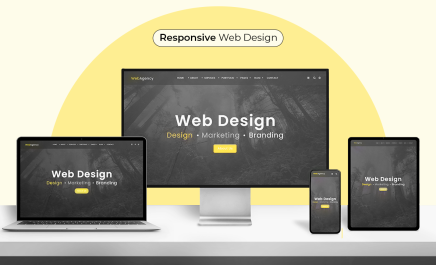HubSpot With HubDb: Then vs. Now & Why Marketers Should Rejoice
- Bhuvan Desai
- January 25, 2017
- 4 Minute Read

Online marketing has evolved to a point where marketers need to provide updated and relevant information to website users. The immediate result is a rise in user engagement and interaction that leads to increased conversions. A data-driven website is the fool-proof technique to provide updated and tailored data to audience. Talking about tailored content that gets updated to provide fresh and relevant information, it was a wonder why HubSpot that advocates strong user experience had limited this particular element in its COS/CMS development platform.
However, since November 2016 marketers and developers have the HubDb, a relational database management system released by HubSpot, and connects it with web pages to provide dynamic data-driven pages that change each time data is added or modified in the database. This has totally revamped the way marketers could provide information to their prospects as compared to the non-static counterpart that limited the scope to engage prospects with updated information. Let’s have a look at how marketers are getting an edge with this dynamic website functionality vs. the static.
| Non-HubDB Website On HubSpot | HubDb Driven Websites On HubSpot |
| Need to integrate third party API. You need to have sound knowledge for API and database. | In-built database. No third-party integrations. No API needed. |
| We need to create table using query. | We can create table by just uploading a CSV or excel files. |
| Need to have strong knowledge of database. | Coding knowledge is not required. It’s quite simple to understand and operate. |
| Non-HubDb sites take more time to access information from server. | Accessing information from server will take less time, as it does not require third party database. |
| In order to make a non-HubDb site secure, you will need a third party plugin. | It comes with in-built safety features. No need to use additional plugins. |
| You require database connectivity. | You don’t need database connectivity. |
| In order to insert data such as images, you will need a third party plugin that enables drag-and-drop feature. | Inserting data such as images is very simple in a HubDb driven website. You could even drag and drop elements. |
The Kind Of Data-Driven Websites Marketers Could Have With HubDb
Marketers need to address the needs of multiple business types that have their own audience segment with their preferred format for content consumption. At Uplers, we have analyzed the needs of the most common elements of a web page that are data-driven and could be created using the HubDb interface.
- Data visualization
- Tabular data
- Data analytics
- Data interactivity
- Data personalization
Let’s have a detailed look at each one with examples:
Data Visualization
In order to provide complex data in easily digestible chunks of information, you may need the help of data visualization. Data in visual form helps in giving users a context and supports your claims effectively. With HubSpot you could leverage the HubDb database management system and the COS/CMS web development platform to enter, manage, and display data that is significant for your end user. Here are some examples of data visualization based content marketing that marketers could easily execute on HubSpot:
Tabular Data
The interface of tabular data on web pages is more or less the same as in the database. The data is stored and managed in a relational database management system (in our case HubDb). When the data is changed in the database, it gets reflected on the web pages. This kind of setup is generally used for websites that have to share a large volume of information with users based on their selected parameters. The best example of tabular data represented on a webpage is air tickets availability based on the users’ given parameters and fare charts.
Here is an example from smallbusiness.data.gov that displays the performance of various agencies in terms of the goal vs. the actual numbers achieved along with revenue generated.
This type of online database could be easily created on the HubDb table and linked to the webpage where users could get updated numbers on a weekly, monthly, or quarterly basis.
Data Analysis
Let’s suppose a user wants to check out his options for buying a smart phone for a certain price range. He has various options available and wants to know from which manufacturer should he buy the phone. With a data analysis feature on a data-driven website, the user could specify the budget and the manufacturers that he is considering to get a table mentioning all the features available with the selected smart phones to. This kind of setup enables easy comparison for the user.
This is an example from gsmarena.com that gives the option to compare up to 3 smart phones online to help the user know which features are available with the selected phones.
Data InteractivityThe data stored in HubDb could be pulled into some interactive experience for the users that becomes instrumental in increased customer engagement. If your webpage has a tab or slider where content is regularly updated with new offers or content, you could display this data into the jQuery component to make it interactive. This enables dynamic data-driven content across all the slides on a webpage.
We came across this awesome sample that displays the true power of combining data interactivity with the database management system. You simply have to move the slider to the desired apparel and the system will fetch an image from the database to let users know how that particular apparel will look like on the kid.
(Source: http://jackievannice.com/challenge_52_sliders/story.html)
Data Personalization
With HubDb it now becomes easy to build webpages that address individual personal skills. Relevant data could be displayed for users from whom we have already acquired data. For particular skill-set or other parameters, an individual will get information that is only relevant to him. For e.g.: a job consultancy website will only show data that relates to the skills entered by the user.
For all the data that is stored in the HubDb, various filters could be applied to increase relevancy in results.
Job sites like startwire.com offers personalized solution from their huge database. Users get relevant results based on the information submitted by them that helps them find jobs based on their skill-set. This is one of the examples of incorporating personalization on a data-driven website that is dependent on a database.
Conclusion
At this time, we only have a read-only option with HubDb. If you are looking to create complex functionalities that require frequent server side interaction, it is strongly recommended to limit them. You could easily build pages that address the above mentioned functionalities. Your HubDb driven website could load/fetch all the relevant data that could be manipulated or filtered. If you have a grip over front-end development using script, you will be able to create more functionality.

Thank you for submitting the details!
We will keep your information safe. Feel free to contact us with any questions at hello@uplers.com
Please check your email for next steps shared by Robert.

















